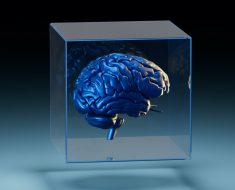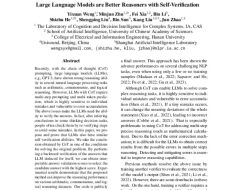. 2023 Nov 1;30(Pt 6):1064-1075.
doi: 10.1107/S160057752300749X.
Epub 2023 Oct 17.
Affiliations
Free PMC article
Item in Clipboard
J Synchrotron Radiat.
.
Free PMC article
Abstract
Recently, there has been significant interest in applying machine-learning (ML) techniques to the automated analysis of X-ray scattering experiments, due to the increasing speed and size at which datasets are generated. ML-based analysis presents an important opportunity to establish a closed-loop feedback system, enabling monitoring and real-time decision-making based on online data analysis. In this study, the incorporation of a combined one-dimensional convolutional neural network (CNN) and multilayer perceptron that is trained to extract physical thin-film parameters (thickness, density, roughness) and capable of taking into account prior knowledge is described. ML-based online analysis results are processed in a closed-loop workflow for X-ray reflectometry (XRR), using the growth of organic thin films as an example. Our focus lies on the beamline integration of ML-based online data analysis and closed-loop feedback. Our data demonstrate the accuracy and robustness of ML methods for analyzing XRR curves and Bragg reflections and its autonomous control over a vacuum deposition setup.
Keywords:
XRR; autonomous experiments; beamline control; closed-loop control; machine learning; reflectometry.
open access.
Figures

Figure 1
Illustration of a synchronous (a) and asynchronous (b) control loop with tasks split across a beamline, and user software environment. (c) Simplified schematic of the measurement protocol consisting of XRR acquisition, instantaneous ML-based online data analysis and thin-film growth control based on closed-loop feedback. Based on preceding measurements a time estimate to reach the predefined thickness is established to stop the growth process.

Figure 2
Illustration of timing and architecture of the implemented synchronous and asynchronous feedback loops. In (a), data acquisition, ML inference and feedback action follow each other strictly in time (synchronous over distributed system) while, in (b), acquisition and data analysis + feedback are separated in independent co-routines to decouple independent processes. Further direct communication with the ML model using TANGO controls is illustrated in (a) while in (b) an intermediate workflow system and an industrial inference server are used.

Figure 3
Sketch of the neural network architecture consisting of an embedding 1D CNN and prior injection into a combining multilayer perceptron. Here we use dynamic parameter ranges (min/max) for all free parameters. The Q-axis is to be defined prior to the training process, to be able to only provide 1D data (without q support vector). Postprocessing involves polishing of parameters predicted by ML by applying a traditional least-mean-squares fit.

Figure 4
Parameterization of the periodic multilayer structure. The stacked layers share the same thickness d
monolayer, roughnesses and SLD densities. Most of the parameters introduced are relative to d
monolayer. Two sigmoid functions modulate the resulting periodic SLD profile. The position of the first sigmoid c
sig defines the number of monolayers and the corresponding thickness d
film = d
monolayer
c
sig, while its width σsig determines the surface roughness σfilm = σsig
d
monolayer. The second sigmoid modulates the contrast Δρ between the layers, resulting in smoother SLD profile at the surface.

Figure 5
ML-controlled thin-film deposition. (a) Exemplary measurements and fits based on online data analysis. The experimental data are acquired using fast, real-time scans, thus the poor counting statistics around q ≃ 0.11 Å−1 are due to the limited number of absorber changes. (b) Target thicknesses in closed-loop operation versus actually measured thicknesses after the closed-loop feedback terminated the growth. Target thicknesses were defined in 25 Å steps starting from 75 Å. Profiles shown in (a) correspond to a subset of data points shown in (b).

Figure 6
(a) ML-based fits of PTCDI-C8 multilayer structures (1 Monol. corresponds to ∼20 Å film thickness). As input for the ML model only points measured around the PTCDI-C8 Bragg peak were taken into account to enable faster data acquisition. (b) Scattering length density profiles corresponding to (a).

Figure 7
(a) Thin-film thickness extracted through the ML model in real time during the measurement compared with a quartz crystal microbalance (QCM) reference. For films with thickness above roughly 250 Å, i.e. 12 molecular monolayers, ML results are reliable. (b) Selected fits from the real-time dataset. Ambiguity in the thickness predictions for lower thicknesses mainly results from the absence of significant features in the investigated q-range.
Cited by
-
Deep learning at the edge enables real-time streaming ptychographic imaging.
Nat Commun. 2023 Nov 3;14(1):7059. doi: 10.1038/s41467-023-41496-z.
Nat Commun. 2023.PMID: 37923741
Free PMC article.
References
-
-
Allan, D., Caswell, T., Campbell, S. & Rakitin, M. (2019). Synchrotron Radiat. News, 32(3), 19–22.
-
-
-
Andrejevic, N., Chen, Z., Nguyen, T., Fan, L., Heiberger, H., Zhou, L.-J., Zhao, Y.-F., Chang, C.-Z., Grutter, A. & Li, M. (2022). Appl. Phys. Rev. 9, 011421.
-
-
-
Babu, A. V., Zhou, T., Kandel, S., Bicer, T., Liu, Z., Judge, W., Ching, D. J., Jiang, Y., Veseli, S., Henke, S., Chard, R., Yao, Y., Sirazitdinova, E., Gupta, G., Holt, M. V., Foster, I. T., Miceli, A. & Cherukara, M. J. (2022). arXiv:2209.09408.
-
-
-
Barty, A., Gutt, C., Lohstroh, W., Murphy, B., Schneidewind, A., Grunwaldt, J.-D., Schreiber, F., Busch, S., Unruh, T., Bussmann, M., Fangohr, H., Görzig, H., Houben, A., Kluge, T., Manke, I., Lützenkirchen-Hecht, D., Schneider, T. R., Weber, F., Bruno, G., Einsle, O., Felder, C., Herzig, E. M., Konrad, U., Markötter, H., Rossnagel, K., Sheppard, T. & Turchinovich, D. (2023). DAPHNE4NFDI – Consortium Proposal, https://doi.org/10.5281/ZENODO.8040606.
-




